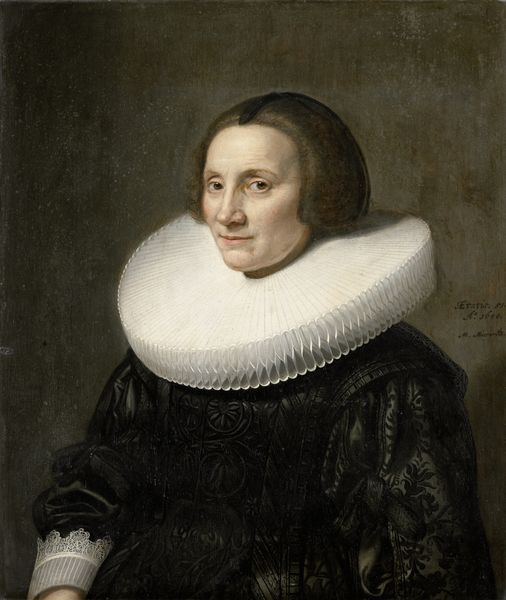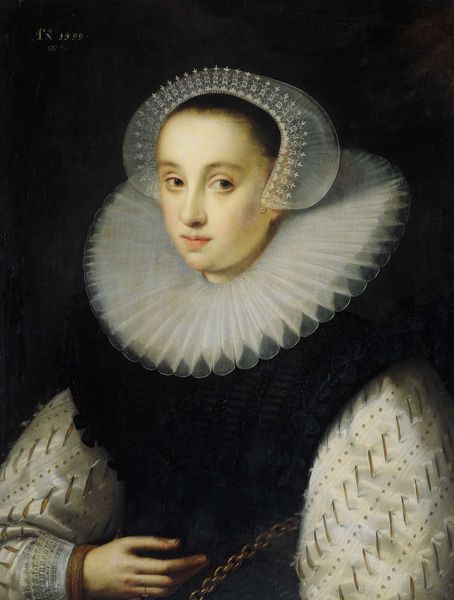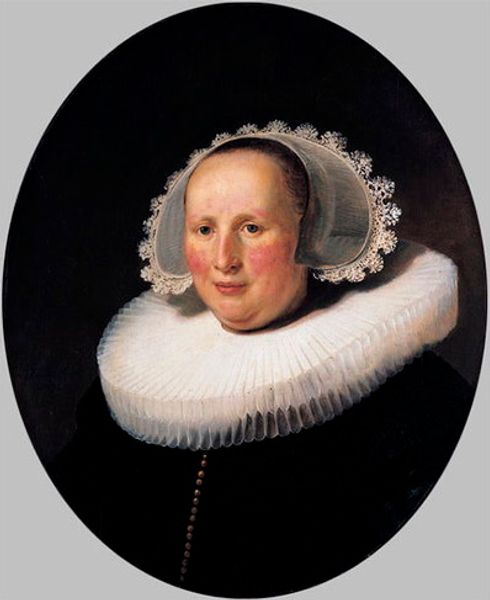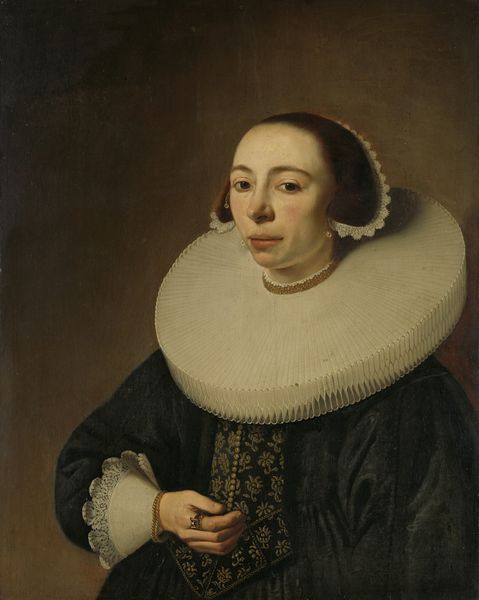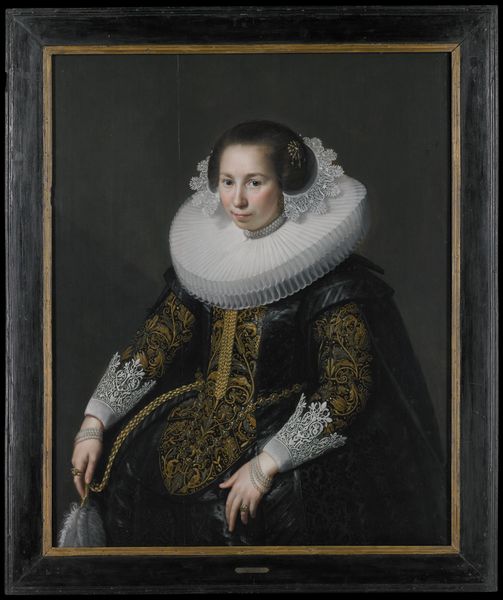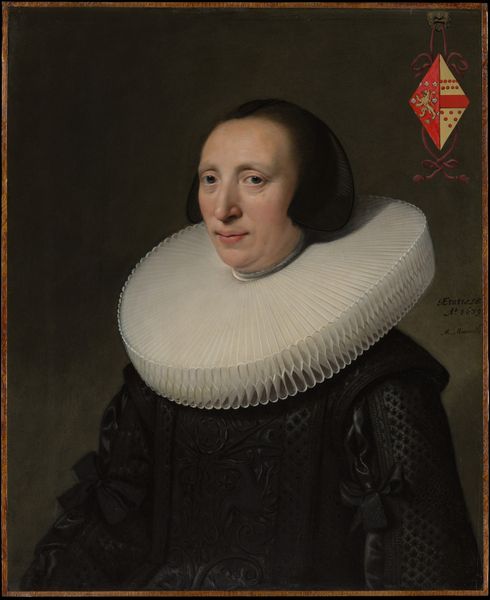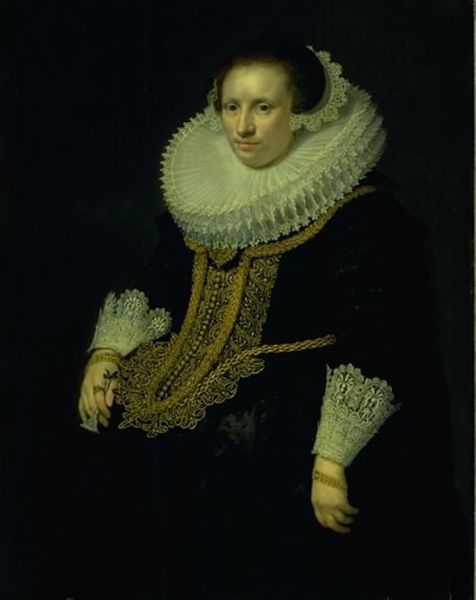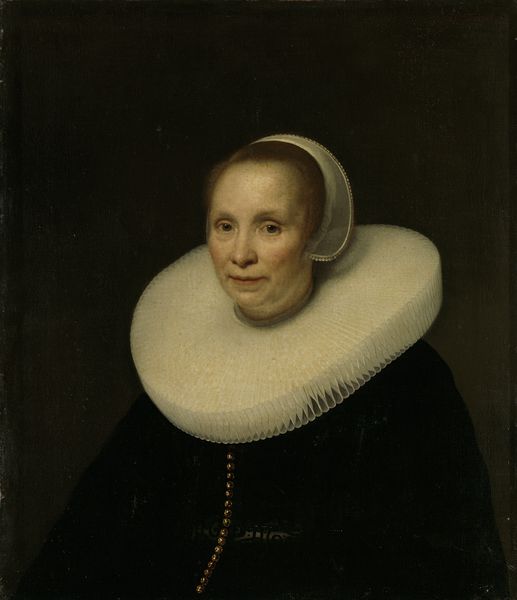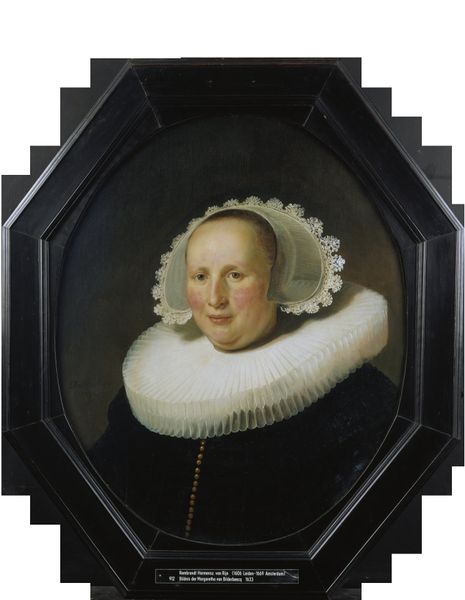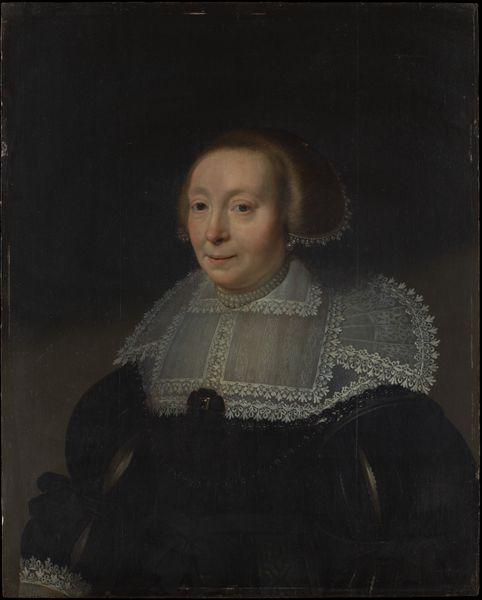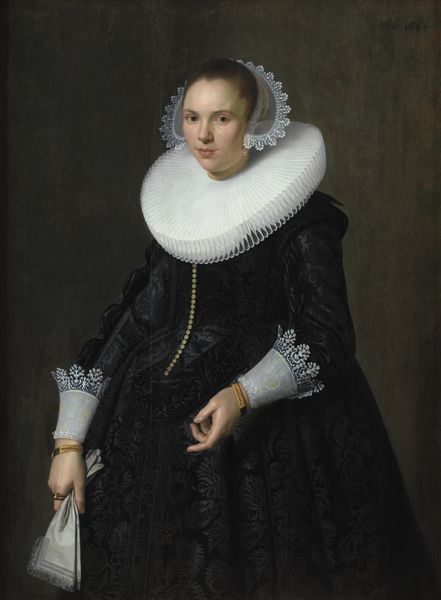
painting, oil-paint
#
portrait
#
baroque
#
painting
#
oil-paint
#
figuration
#
genre-painting
#
academic-art
Copyright: Public domain
Curator: This oil painting from 1652 is a portrait of Johanna Visscher, rendered by David Bailly. Immediately, I find her captivating, don’t you? There is a formality, and yet I sense a vulnerability beneath the surface. Editor: Indeed, there’s an austerity to the piece. It strikes me as archetypal of its period – that iconic, starched ruff is almost comical, isn’t it? It makes me consider the sitter's status within society. The visible symbols are undeniable; clothes certainly make the woman. Curator: They really do! The ruff speaks of wealth and status. That flawless, unbroken circle suggests the social barriers defining the era. Her carefully arranged hair is another mark of distinction, set against an almost neutral background. It creates a psychological drama by its restraint, like a carefully veiled emotion. Editor: That severity seems a marked cultural trend. The Baroque period sought grand statements about social structure. Take, for example, the placement of that elaborate brocade. A dark fabric that suggests a subtle sensuality, partly concealed. Is this a hint towards the feminine mystique and emerging bourgeoisie values perhaps? Curator: It may hint that she has access to fabrics and luxury objects because of her role within the trade or that of her spouse, if she had one. It provides a certain visual anchor. Also note the detail – Bailly's technical ability shines in the rendering of fabrics. I see her presence embodying virtues of the time period - prudence and temperance in this composition. Editor: The painter uses dark background that allows Johanna to dominate visually. One cannot overlook the art’s relationship to patronage and power during that era. These kinds of portraits not only record likeness, but actively construct a narrative of a person’s importance, shaping their future reception. Curator: I am especially drawn to her direct gaze. It transcends the societal framework. It connects us, doesn’t it, even centuries later, and invites us to reflect on the interplay between representation, memory, and meaning. Editor: It also lets me consider that we will probably never really know who she truly was; instead, she becomes an artifact that can be interpreted in many ways. I believe its endurance truly testifies to how profoundly human images interact and react to society.
Comments
No comments
Be the first to comment and join the conversation on the ultimate creative platform.
